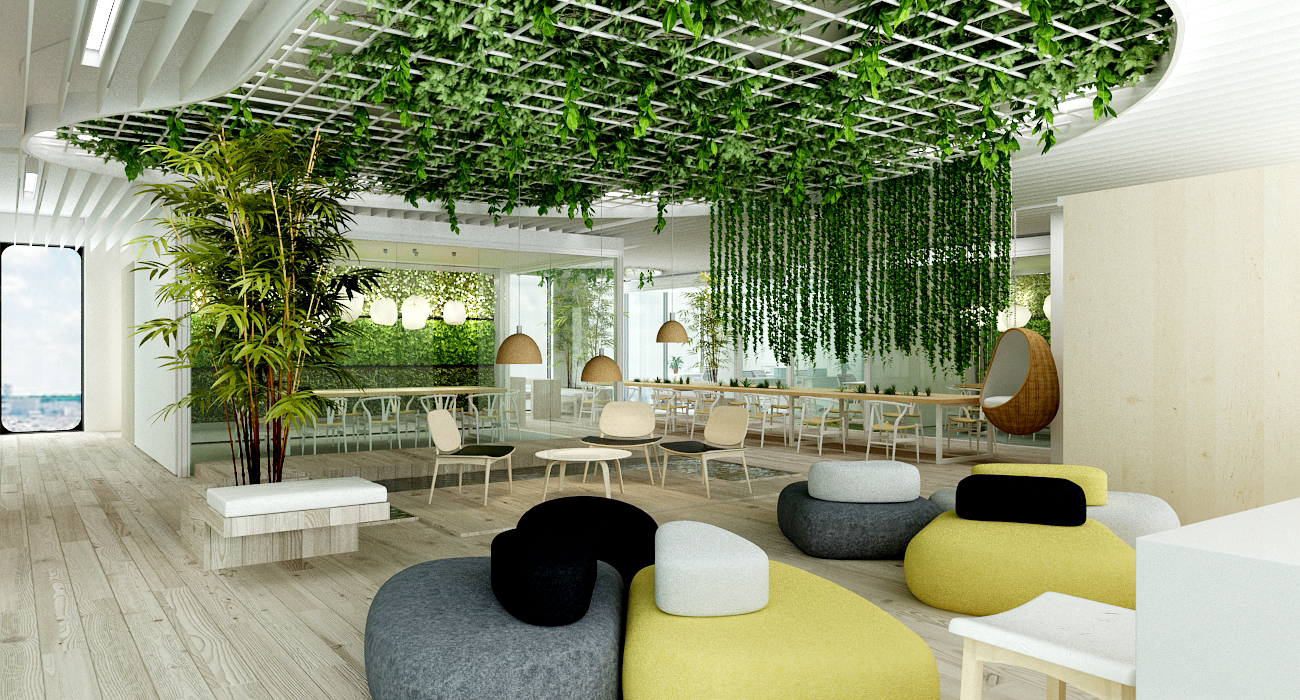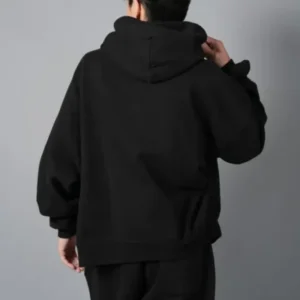
The modern workplace is undergoing a profound transformation that extends far beyond digital innovation and remote work capabilities. At the intersection of environmental consciousness and employee wellbeing lies a movement that’s reshaping how we think about office furniture, particularly seating solutions. This shift represents more than a trend; it’s a fundamental reimagining of how our work environments can contribute to both planetary health and human productivity.
Sustainable seating choices reflect a growing understanding that the objects we interact with daily carry significant environmental footprints that extend from raw material extraction through manufacturing, transportation, use, and eventual disposal. The average office chair, when produced through conventional methods, can generate substantial carbon emissions, consume non-renewable resources, and contribute to waste streams that persist in landfills for decades. However, innovative approaches to office seating design are challenging these traditional patterns, offering solutions that align business success with environmental stewardship.
The transition toward eco-friendly office seating represents a convergence of multiple factors: increasing awareness of climate change impacts, evolving employee expectations around corporate responsibility, regulatory pressures for sustainable business practices, and the recognition that environmentally conscious choices often deliver superior long-term value. Organizations that embrace sustainable seating solutions are not merely checking boxes for corporate social responsibility; they’re making strategic investments in employee satisfaction, brand reputation, and operational efficiency.
Rethinking Material Choices Beyond Conventional Options
The foundation of sustainable seating lies in material selection that prioritizes renewable resources, recycled content, and low-impact manufacturing processes. Traditional office chairs often rely heavily on petroleum-based plastics, synthetic foams, and metal components that require energy-intensive production methods. Sustainable alternatives are emerging that challenge these conventional approaches while maintaining the durability and comfort expectations of modern office environments.
Recycled ocean plastics are finding new life in chair bases, armrests, and structural components, transforming environmental waste into functional office furniture. This approach addresses two environmental challenges simultaneously: reducing ocean pollution while decreasing demand for virgin plastic production. The technical properties of recycled ocean plastics often exceed those of traditional materials, offering enhanced durability and weather resistance that extends product lifespan.
Bio-based materials derived from agricultural waste, rapidly renewable plant fibers, and innovative composites are replacing petroleum-based components throughout chair construction. Seat cushions made from natural latex harvested from sustainably managed rubber plantations provide superior comfort while biodegrading safely at end-of-life. Fabric coverings woven from recycled bottles, discarded fishing nets, and post-consumer textile waste demonstrate that environmental responsibility need not compromise aesthetic appeal or functional performance.
Responsibly sourced wood components, when used in chair construction, support forest conservation efforts while providing natural beauty and structural integrity. Certification programs ensure that wooden elements originate from forests managed according to strict environmental and social standards, protecting biodiversity while supporting local communities dependent on forestry resources.
Manufacturing Processes That Minimize Environmental Impact
Sustainable seating extends beyond material choices to encompass manufacturing approaches that reduce energy consumption, minimize waste generation, and eliminate harmful chemical emissions. Progressive furniture manufacturers are adopting clean production technologies that dramatically reduce their environmental footprints while often improving product quality and worker safety.
Water-based adhesives and finishes replace solvent-based alternatives that release volatile organic compounds into indoor air and manufacturing environments. These cleaner alternatives often provide superior bonding strength and finish durability while creating healthier conditions for both production workers and end users. The elimination of toxic chemicals from manufacturing processes also simplifies end-of-life recycling by removing contamination barriers that complicate material recovery.
Energy-efficient manufacturing facilities powered by renewable energy sources are becoming increasingly common among leading sustainable furniture producers. Solar panels, wind power, and geothermal systems provide clean energy for production processes while reducing operational costs over time. Some manufacturers achieve net-positive energy production, contributing clean electricity to local grids while maintaining their production schedules.
Waste reduction strategies implemented throughout manufacturing processes minimize material consumption while maximizing utilization of raw inputs. Computer-controlled cutting systems optimize material usage, reducing waste generation by precisely calculating optimal cutting patterns. Closed-loop systems capture and reuse production waste, transforming scraps and offcuts into new products rather than sending them to landfills.
Local and regional manufacturing reduces transportation impacts while supporting local economies and reducing supply chain vulnerabilities. Distributed production networks position manufacturing facilities closer to end markets, reducing shipping distances and associated carbon emissions while enabling more responsive customer service and customization capabilities.
Durability Engineering for Extended Lifecycles
Sustainable seating philosophy prioritizes longevity over disposability, recognizing that the most environmentally responsible chair is one that serves users effectively for many years without requiring replacement. This approach challenges fast-furniture models that prioritize low initial costs over long-term performance and environmental impact.
Modular design approaches enable component replacement and upgrades without discarding entire chairs. Seat cushions, armrests, base components, and fabric coverings can be individually replaced or updated as they wear or as user preferences change. This modularity extends product lifecycles while providing opportunities for refreshing office aesthetics without environmental costs associated with complete furniture replacement.
Rigorous testing protocols ensure that sustainable chairs meet or exceed durability standards established for conventional office seating. Accelerated wear testing, structural load analysis, and component fatigue evaluation verify that environmental consciousness does not compromise functional performance. Many sustainable chairs demonstrate superior durability compared to conventional alternatives, providing better value over their extended service lives.
Repairable design features enable on-site maintenance and component replacement that extend chair lifecycles far beyond typical replacement cycles. Standardized fasteners, readily available replacement parts, and clear maintenance documentation empower facility managers to maintain seating inventories rather than replacing them. This approach reduces both environmental impact and long-term furniture costs.
Comfort Innovation Through Natural Solutions
Sustainable seating challenges the assumption that environmental responsibility requires compromising user comfort. Innovative approaches to ergonomic support, temperature regulation, and aesthetic appeal demonstrate that eco-friendly chairs can deliver superior user experiences while maintaining environmental credentials.
Natural latex foam systems provide exceptional comfort and support while offering superior breathability compared to petroleum-based alternatives. These materials conform to individual body shapes while maintaining structural integrity over extended use periods. The natural elasticity of latex provides consistent support that reduces pressure points and promotes healthy posture throughout long work sessions.
Breathable fabric systems woven from natural and recycled fibers regulate temperature and humidity more effectively than synthetic alternatives. These materials wick moisture away from users while allowing air circulation that prevents heat buildup during extended sitting periods. The result is enhanced comfort that reduces fatigue and supports sustained productivity.
Ergonomic innovations derived from biomimetic design principles create seating solutions that support natural human movement patterns while encouraging healthy posture. These designs often eliminate the need for complex mechanical adjustment systems, reducing manufacturing complexity while improving user experience through intuitive functionality.
Circular Design Principles for End-of-Life Planning
Truly sustainable seating incorporates circular design principles that plan for product end-of-life from the initial design phase. This approach ensures that chairs can be efficiently disassembled, with components either returned to manufacturing processes or safely returned to natural systems through biodegradation.
Design for disassembly enables efficient separation of different materials at end-of-life, facilitating recycling and material recovery processes. Mechanical fasteners replace chemical bonds that would prevent component separation, while material identification systems guide proper sorting for recycling streams. Clear disassembly instructions provide guidance for facility managers or recycling professionals.
Take-back programs offered by progressive manufacturers provide end-of-life solutions for customers while creating closed-loop material flows. These programs collect used chairs, disassemble them for material recovery, and incorporate reclaimed materials into new product manufacturing. This approach eliminates disposal costs for customers while providing manufacturers with reliable sources of recycled materials.
Biodegradable components enable safe return of organic materials to natural systems at product end-of-life. Natural latex cushions, organic fabric covers, and bio-based plastic components decompose safely without leaving persistent pollutants. This approach reduces landfill burdens while returning nutrients to soil systems.
Health Benefits of Natural Materials in Seating
Sustainable office seating often delivers health benefits that extend beyond environmental advantages, creating indoor environments that support employee wellbeing through improved air quality and reduced exposure to synthetic chemicals. These health benefits represent additional value propositions that justify sustainable seating investments.
Low-emission materials reduce indoor air pollution by eliminating volatile organic compounds commonly released by conventional furniture. Natural materials and water-based finishes maintain indoor air quality while reducing respiratory irritation and chemical sensitivities that can affect employee comfort and productivity.
Antimicrobial properties inherent in many natural materials provide hygienic benefits without requiring chemical treatments that might compromise indoor air quality. Natural latex, certain wood species, and organic fabric treatments resist bacterial and fungal growth while maintaining safe indoor environments.
Temperature regulation properties of natural materials contribute to thermal comfort that supports productivity and reduces energy consumption for climate control. Breathable natural fabrics and porous cushioning materials prevent heat buildup while maintaining comfortable seating surfaces throughout varying seasonal conditions.
Economic Advantages of Sustainable Seating Investments
While sustainable seating solutions may require higher initial investments compared to conventional alternatives, total cost of ownership calculations often demonstrate superior economic performance over chair lifecycles. These economic advantages arise from durability, reduced replacement frequency, lower maintenance requirements, and potential health-related productivity benefits.
Extended product lifecycles reduce replacement frequency and associated costs including purchasing, delivery, installation, and disposal of conventional chairs. Sustainable chairs designed for longevity often serve effectively for decades rather than years, dramatically reducing annualized furniture costs.
Reduced maintenance requirements associated with durable sustainable materials minimize ongoing costs for cleaning, repairs, and component replacement. Natural materials often prove more resistant to staining and wear compared to synthetic alternatives, maintaining appearance and functionality with minimal intervention.
Employee productivity benefits associated with improved comfort, air quality, and aesthetic appeal may offset initial investment costs through enhanced performance and reduced absenteeism. Comfortable, healthy work environments support employee satisfaction and retention, reducing recruitment and training costs.
Brand Positioning Through Environmental Leadership
Organizations that invest in sustainable seating solutions often experience brand reputation benefits that extend far beyond immediate environmental impacts. These benefits include enhanced employee recruitment and retention, improved customer relationships, and competitive advantages in markets increasingly focused on environmental responsibility.
Employee attraction and retention benefits arise as workers increasingly prioritize employers that demonstrate genuine environmental commitment. Sustainable office environments signal organizational values that resonate with environmentally conscious professionals, supporting recruitment efforts while encouraging existing employees to remain with forward-thinking organizations.
Customer relationship advantages emerge as clients and partners increasingly evaluate suppliers based on environmental performance and social responsibility. Visible commitments to sustainable practices, including office furniture choices, demonstrate authentic environmental leadership that supports business development efforts.
Regulatory compliance advantages position organizations ahead of evolving environmental regulations that may eventually mandate sustainable practices across various business operations. Early adoption of sustainable seating solutions demonstrates proactive environmental management that may provide competitive advantages as regulations tighten.
Implementation Strategies for Sustainable Seating Transitions
Successful transitions to sustainable seating require strategic planning that addresses budget constraints, user preferences, and operational requirements while maximizing environmental benefits. Office space planning guidelines emphasize the importance of comprehensive assessment processes that evaluate current furniture conditions, user needs, and environmental goals before implementing sustainable alternatives. Phased replacement strategies often provide manageable approaches to large-scale furniture transitions while maintaining operational continuity.
Pilot programs enable organizations to evaluate sustainable seating options on smaller scales before committing to comprehensive transitions. These programs provide opportunities to assess user satisfaction, durability performance, and maintenance requirements while building organizational confidence in sustainable alternatives.
Employee engagement strategies ensure that sustainable seating transitions receive user support and maximize adoption success. Communication about environmental benefits, comfort advantages, and organizational values helps employees understand and appreciate sustainable furniture investments while encouraging proper care and maintenance.
Vendor partnership development creates relationships with manufacturers and suppliers that support long-term sustainable seating strategies. These partnerships often provide access to take-back programs, maintenance support, and product development collaboration that enhance sustainable furniture value propositions.
Conclusion
The evolution toward sustainable office seating represents a fundamental shift in how organizations approach workplace design, environmental responsibility, and employee wellbeing. This transformation extends far beyond simple material substitutions to encompass comprehensive approaches that consider product lifecycles, manufacturing impacts, user health, and end-of-life planning. Sustainable seating solutions demonstrate that environmental consciousness and business success are not competing priorities but complementary strategies that reinforce each other through improved employee satisfaction, enhanced brand reputation, and superior long-term value.
The future of office seating lies in solutions that seamlessly integrate environmental stewardship with human-centered design, creating work environments that support both planetary health and human productivity. Organizations that embrace sustainable seating choices today are not merely reducing their environmental footprints; they are investing in workplace cultures that attract top talent, inspire innovation, and contribute to broader societal shifts toward sustainability. As the business world continues evolving toward more responsible practices, sustainable seating choices will likely transition from competitive advantages to fundamental expectations, making early adoption both environmentally responsible and strategically wise.






